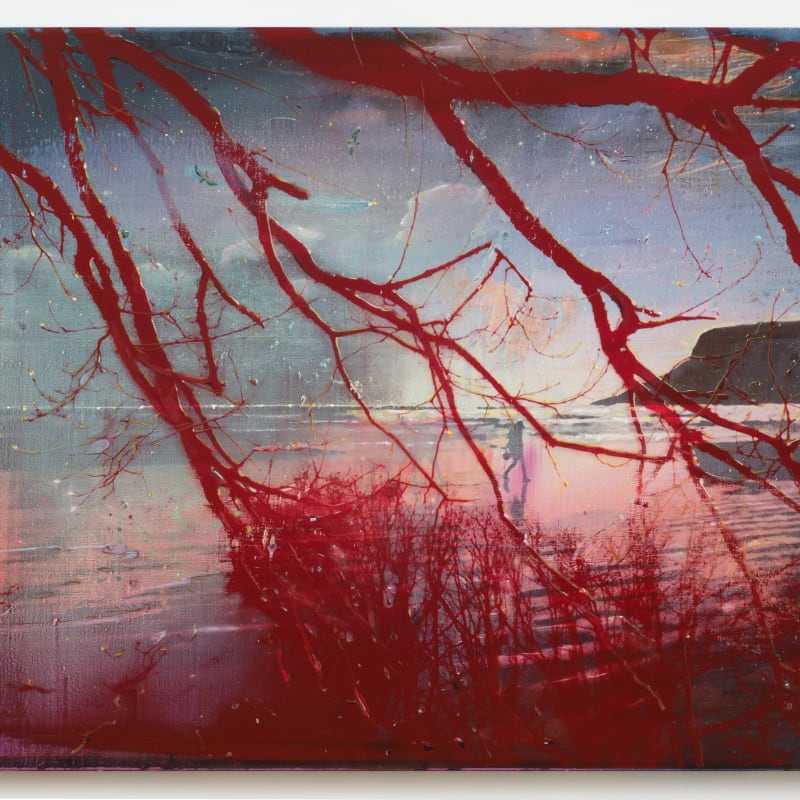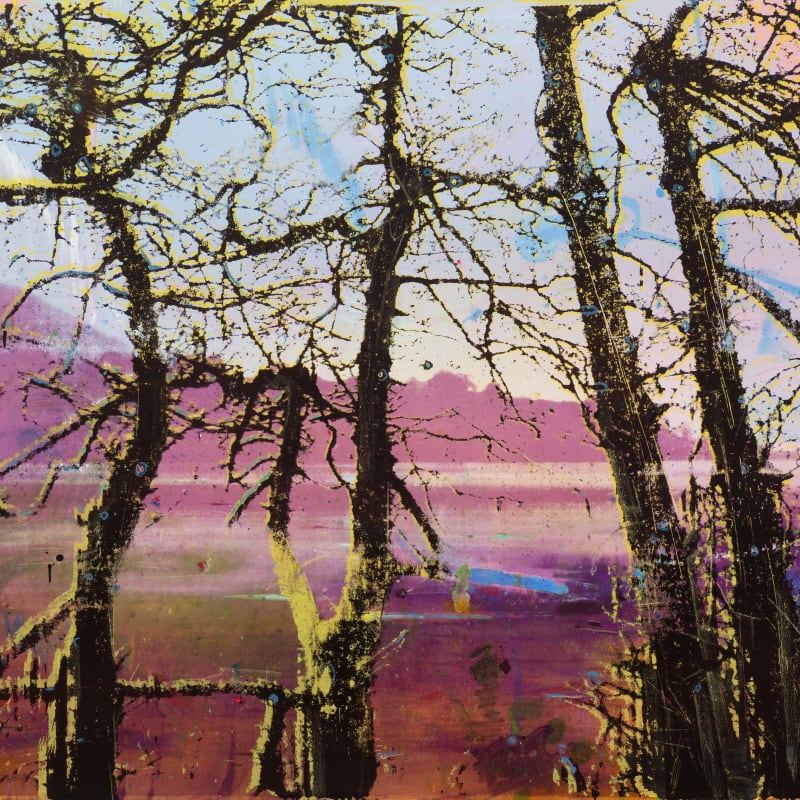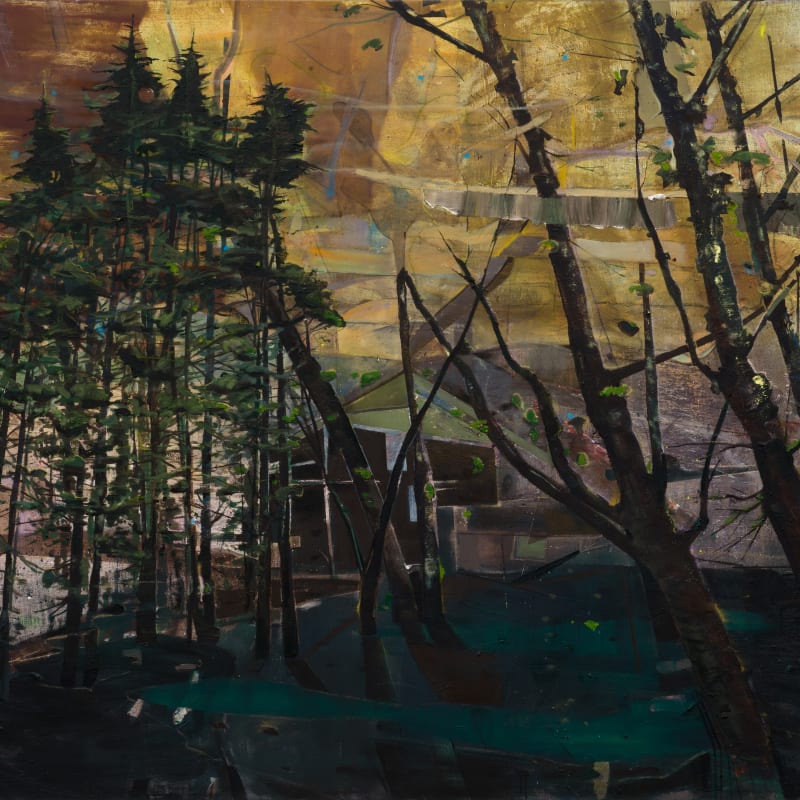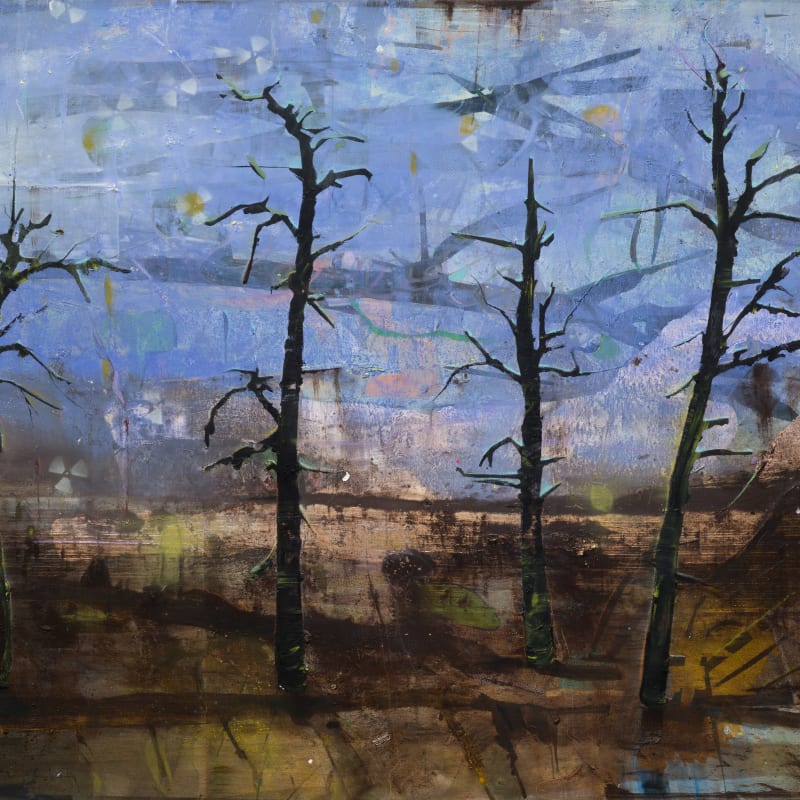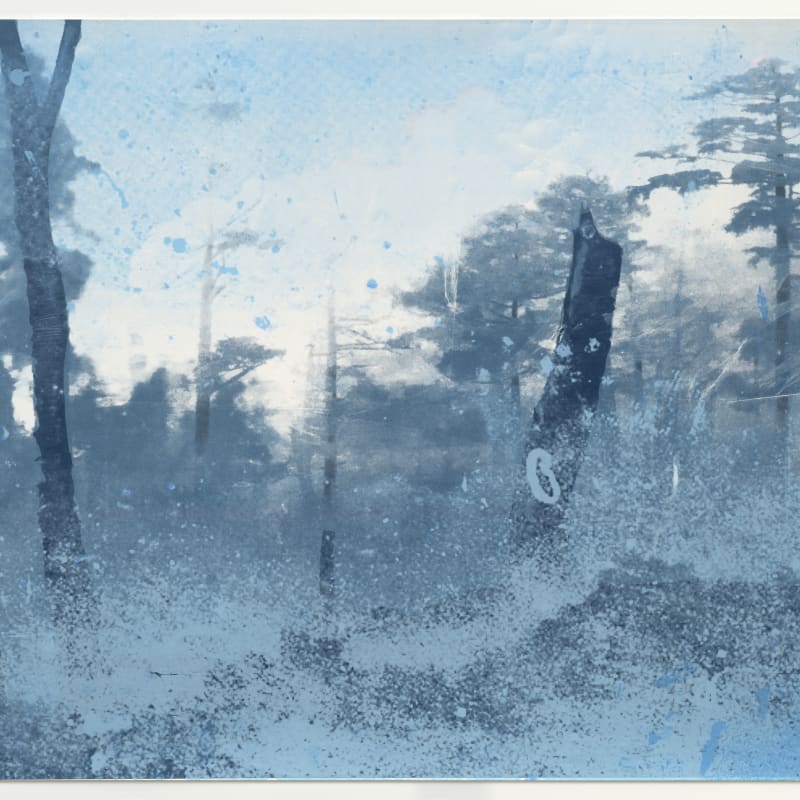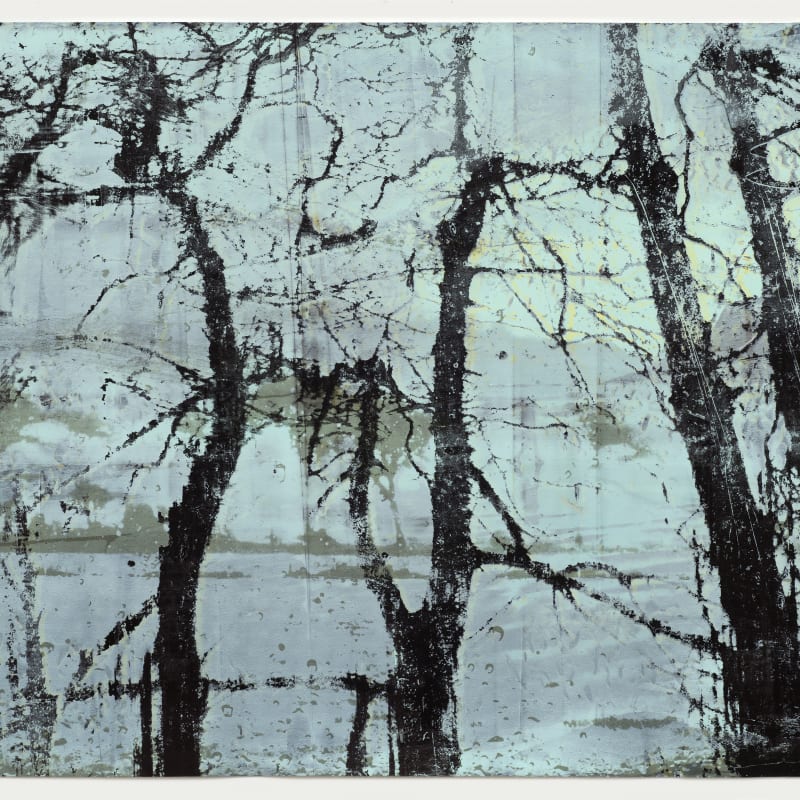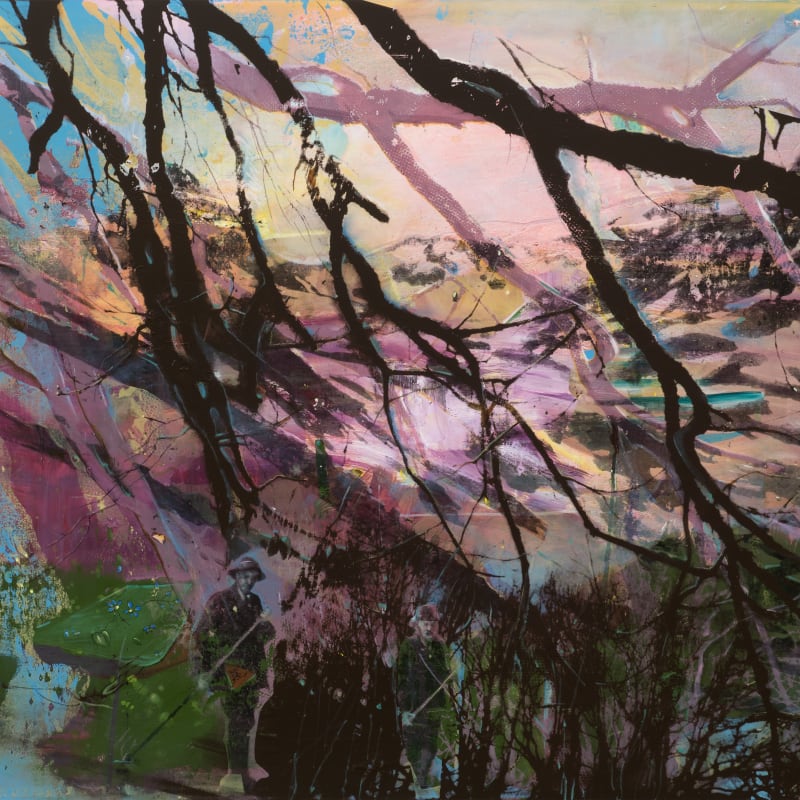In the ensemble of Elizabeth Magill’s latest works, presented under the title Headland, the artist not only carries forward her familiar modi operandi but also extends this with silkscreen printing on canvas and paper. Magill has always distinguished herself in accumulating diverse dispositions of techniques and textures, a quality to which she now successfully adds serigraphy. Moreover, this type of print lends itself very well to her love for photographic sources.
In several of her recent artworks, Magill falls back on another visual tactic she has often used in the past, which is the placement of natural elements like trees or branches. For our contemporary eyes, this compositional trait is immediately comprehensible. After all, it creates an unmistakeably natural vista. However, such a point of view is extremely exceptional in the tradition of landscape painting; it is more common in photography and especially cinema.
These conventions in the history of western art are commonly known as repoussoir; to employ figures on the sides of a composition in order to enhance the feeling of depth and to push the viewer’s gaze into the actual scene. Red Bay, 2016-17 which will be exhibited, further defies that tradition in like manner. The most dramatic feature of the image is the diagonally hanging red branches in front of the whole sight.
It is vaguely reminiscent of a similar motif on one the most popular paintings of avant-garde art: Salvador Dalì’s 1931 “La persistència de la memòria”. For this element in his dreamscape, Dalì took a tip of Cap de Creus in Catalonia as his model, while Magill adopted Garron Point on the coast of Northern Ireland. With both artists, a deeply personal affinity provoked their choice of depicting these particular headlands. Because these overhanging branches are situated closer to our position, even disturbingly so, it is as if we, as onlookers, are hiding behind them. Indeed, this particular point of view enables to see while not being seen; it recalls the position of a spy or a scout on the watch for intelligence, or of a voyeur. Thus, we observe a beach, set in subdued tones. The horizon distinctly cuts the painting nearly halfway. However the demarcation between the sea and the actual coast, which seems to be wet and striated, and is covered in a translucent pink, is vague. The main object is obviously the solitary figure walking along the shoreline in that direction. It is hard to discern the person’s gender from the silhouette.
A feeling of intense curiosity for that intriguing figure on the beach is aroused but we miss a narrative, time-based structure that for instance the medium of cinema would provide. Here, we are left with our own imagination to construct and complete a meaningful interpretation. Further information can be gained from another version of this image, which is a silkscreen print on paper and is included in this exhibition as well. Here, the forefront layer of wood is black instead of red and has become denser due to the addition of a foliage-like pattern. Even more, the figure on the beach is not alone; it leads a packhorse. On closer inspection, the animal appears to be present on Red Bay too, filtered through strata of washed paint that make up the shore. The visual ambiguity of the horse, and by extension of the person walking in front of it, makes it seem as if we are witnessing from behind the branches some sort of supernatural apparition, a mirage or a fata morgana.
Tom Nys, 2017
